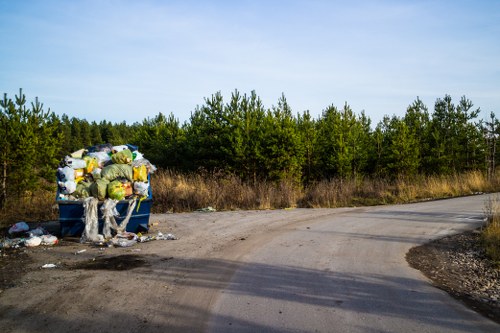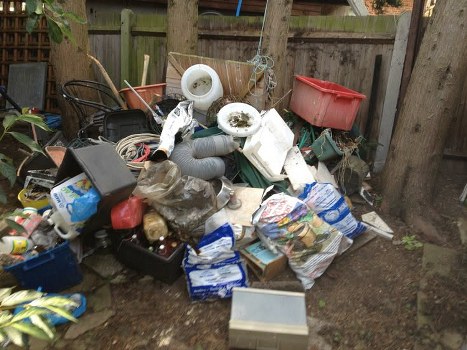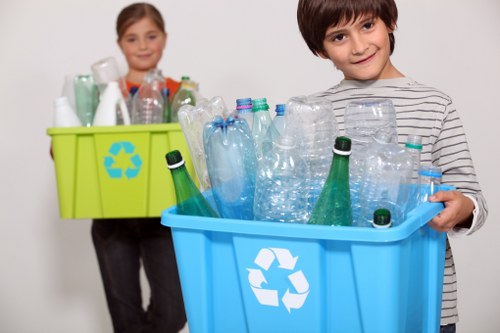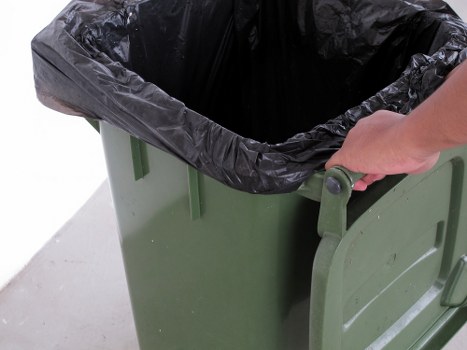Litter Clearance Hook: A Comprehensive Guide

Litter clearance hooks are essential tools for maintaining clean and safe environments. Whether you're a professional cleaner or a community volunteer, understanding how to use these hooks effectively can make a significant difference in your waste management efforts.
These hooks are designed to collect and remove litter efficiently, reducing the environmental impact and promoting a healthier community. In this article, we'll explore the various aspects of litter clearance hooks, including their types, uses, benefits, and best practices.
By the end of this guide, you'll have a thorough understanding of how litter clearance hooks can aid in keeping our surroundings clean and sustainable.
What is a Litter Clearance Hook?

A litter clearance hook is a specialized tool used to collect and remove litter from various environments. Typically made of durable materials like steel or plastic, these hooks come in different shapes and sizes to cater to different cleaning needs.
They are commonly used in parks, beaches, streets, and other public areas to help maintain cleanliness. The design allows users to efficiently gather litter without the need for direct contact, promoting hygiene and ease of use.
Understanding the different types of litter clearance hooks can help you choose the right tool for your specific requirements.
Types of Litter Clearance Hooks

There are several types of litter clearance hooks available, each suited for different tasks:
- Standard Hooks: Basic hooks used for general litter collection.
- Extendable Hooks: These hooks can be extended to reach litter in hard-to-access areas.
- Magnetic Hooks: Equipped with magnets to collect metal debris efficiently.
- Multi-function Hooks: Versatile tools that combine several functions, such as gripping and cutting.
Choosing the right type depends on the specific environment and the nature of the litter you intend to collect.
Each type offers unique advantages that can enhance your litter clearance efforts.
Benefits of Using Litter Clearance Hooks

Adopting litter clearance hooks in your cleaning routine offers numerous benefits:
- Efficiency: Quickly gather and remove litter, saving time and effort.
- Safety: Reduce the risk of injury by avoiding direct contact with sharp or hazardous waste.
- Environmental Impact: Help protect ecosystems by preventing litter from harming wildlife and polluting natural habitats.
- Cost-Effective: Durable hooks last longer, reducing the need for frequent replacements.
These benefits make litter clearance hooks an invaluable tool for both individual and community cleaning projects.
Implementing these tools can lead to more effective and sustainable waste management practices.
Best Practices for Using Litter Clearance Hooks

To maximize the effectiveness of your litter clearance hooks, consider the following best practices:
- Regular Maintenance: Keep your hooks clean and free from debris to ensure optimal performance.
- Proper Storage: Store hooks in a dry place to prevent rust and damage.
- Training: Educate users on the correct usage to enhance efficiency and safety.
- Combine with Other Tools: Use hooks alongside gloves and bags for a more comprehensive cleaning approach.
Following these practices ensures that your litter clearance hooks remain effective and durable over time.
Consistent use and care can greatly extend the lifespan of your cleaning tools.
Local Relevance: Litter Clearance Hooks in Hook and Surrounding Areas

In the town of Hook, litter clearance hooks play a vital role in keeping the area pristine. The community has made significant strides in waste management, thanks in part to the effective use of these tools.
Here are some of the nearby areas where litter clearance hooks are extensively used:
- Hook Central: The heart of Hook, where cleanliness is a top priority.
- Sobrenton: A residential area benefiting from regular litter clearance activities.
- Blandford: Known for its parks, litter clearance hooks help maintain its green spaces.
- Bradley Cross: An area with busy streets requiring efficient litter management.
- Pitney Bridge: A picturesque locale where hooks assist in preserving natural beauty.
- Crux Easton: A community that actively participates in litter clearance initiatives.
- Easton on the Hill: Utilizing hooks to keep its scenic views clean.
- Manchester: Industrial areas where litter clearance hooks manage different types of waste.
- Weston Corbett: Residential cleanliness maintained through regular use of hooks.
- Newport: Public spaces kept tidy with the help of litter clearance tools.
Each of these areas benefits uniquely from the implementation of litter clearance hooks, contributing to the overall cleanliness and environmental health of the region.
Community involvement in these areas has led to a noticeable improvement in waste management and public satisfaction.
Choosing the Right Litter Clearance Hook

Selecting the appropriate litter clearance hook depends on several factors:
- Type of Litter: Consider the nature of the waste you will be collecting.
- Environment: Urban, rural, or coastal areas may require different tools.
- Frequency of Use: Heavier use demands more durable hooks.
- Budget: Balance cost with quality to find the best value.
By evaluating these factors, you can choose a litter clearance hook that meets your specific needs and ensures effective waste management.
Investing in the right tool can enhance your cleaning efforts and provide long-term benefits.
Maintenance Tips

Proper maintenance of your litter clearance hooks ensures longevity and performance:
- Clean hooks after each use to remove any residual waste.
- Inspect for damage or wear regularly.
- Lubricate moving parts if applicable.
- Store in a dry, sheltered location to prevent rust.
Regular maintenance not only extends the life of your hooks but also ensures they are always ready for use when needed.
Neglecting maintenance can lead to decreased efficiency and potential safety hazards.
Environmental Impact of Litter Clearance Hooks

Litter clearance hooks contribute positively to the environment by:
- Reducing pollution in natural habitats.
- Protecting wildlife from harmful waste.
- Promoting recycling and responsible waste disposal.
- Encouraging community participation in environmental conservation.
These tools play a crucial role in mitigating the adverse effects of litter on our planet.
By facilitating efficient waste collection, litter clearance hooks help maintain the ecological balance and enhance the quality of life.
Community Initiatives

Many communities have adopted litter clearance hooks as part of their environmental initiatives. These programs often involve:
- Organizing regular cleanup drives using litter clearance tools.
- Educating the public on the importance of keeping areas clean.
- Collaborating with local businesses to sponsor cleaning equipment.
- Implementing policies that encourage the use of sustainable waste management practices.
Such initiatives foster a sense of responsibility and pride among community members, leading to a cleaner and healthier environment.
Active participation is key to the success of these programs.
Future Trends in Litter Clearance Technology

The future of litter clearance hooks is promising, with advancements aimed at increasing efficiency and sustainability:
- Smart Hooks: Equipped with sensors to detect and alert users about litter accumulation.
- Eco-friendly Materials: Development of hooks made from recycled or biodegradable materials.
- Automated Systems: Integration with machinery for large-scale waste collection.
- Ergonomic Designs: Improved handles and grips to enhance user comfort and reduce strain.
These innovations aim to make litter clearance more effective and environmentally friendly.
Staying updated with these trends can help communities adopt better waste management practices.
Technological Integration

Integrating technology with litter clearance hooks can revolutionize how we manage waste:
- Use of GPS to track litter collection areas.
- Incorporation of data analytics to optimize cleaning routes.
- Development of mobile apps to coordinate community cleanup events.
- Implementation of IoT devices for real-time monitoring of litter levels.
These integrations can enhance the efficiency and effectiveness of litter clearance efforts.
Embracing technology can lead to smarter and more sustainable waste management solutions.
Conclusion

Litter clearance hooks are indispensable tools in the fight against environmental pollution. Their versatility, efficiency, and ease of use make them suitable for various cleaning tasks across different environments.
By understanding the types, benefits, and best practices associated with these hooks, individuals and communities can significantly improve their waste management efforts.
Moreover, the ongoing advancements in litter clearance technology promise even greater efficiency and sustainability in the future.
Frequently Asked Questions

1. What materials are litter clearance hooks made from?
Litter clearance hooks are typically made from durable materials such as stainless steel, aluminum, or high-strength plastic. These materials ensure longevity and resistance to wear and tear.
2. Can litter clearance hooks be used in all weather conditions?
Yes, most litter clearance hooks are designed to withstand various weather conditions. However, it's essential to choose hooks made from corrosion-resistant materials for areas with high moisture or salty environments.
3. Are there eco-friendly litter clearance hooks available?
Absolutely. Some manufacturers produce litter clearance hooks using recycled materials or biodegradable components, contributing to more sustainable waste management solutions.
4. How do I maintain my litter clearance hook?
Regular maintenance includes cleaning the hook after use, inspecting for damage, lubricating moving parts if necessary, and storing it in a dry place to prevent rust and deterioration.
5. Where can I purchase high-quality litter clearance hooks?
High-quality litter clearance hooks can be purchased from industrial supply stores, online marketplaces, and specialized environmental equipment suppliers. It's important to select reputable brands to ensure durability and effectiveness.